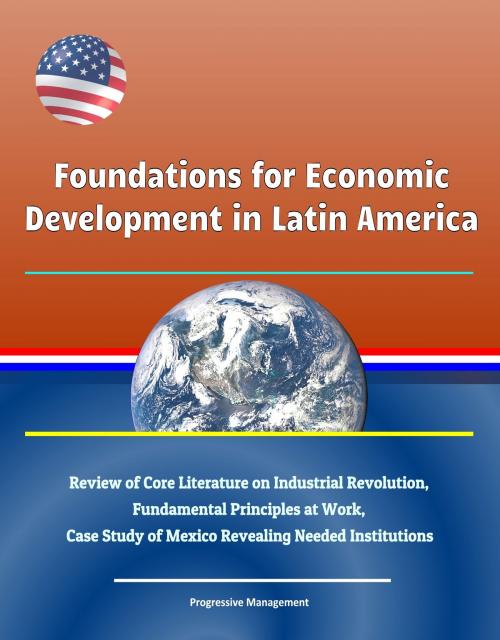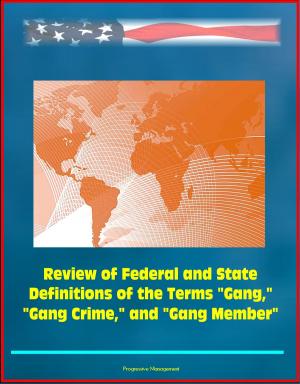Foundations for Economic Development in Latin America: Review of Core Literature on Industrial Revolution, Fundamental Principles at Work, Case Study of Mexico Revealing Needed Institutions
Nonfiction, History, Americas, Mexico, Business & Finance, Economics, Economic History| Author: | Progressive Management | ISBN: | 9780463488478 |
| Publisher: | Progressive Management | Publication: | September 3, 2018 |
| Imprint: | Smashwords Edition | Language: | English |
| Author: | Progressive Management |
| ISBN: | 9780463488478 |
| Publisher: | Progressive Management |
| Publication: | September 3, 2018 |
| Imprint: | Smashwords Edition |
| Language: | English |
This mid-2018 report has been professionally converted for accurate flowing-text e-book format reproduction. Theory attempting to explain poverty and development is vast, varied, and, in many ways, inconclusive. In this thesis, I review core literature on the Industrial Revolution and the rise of Western Europe and the Asian Tigers, finding that their economic development rested on a cycle of three fundamental principles: rule of law, access to capital, and strong, yet restrained, bureaucratic capacity. With an emphasis on Latin America, I then conduct a two-step analysis to determine the universal applicability of these factors. First, I analyze the implementation and outcomes of import substitution industrialization, finding an ambiguous correlation between this landmark set of economic policies and economic outcomes. Second, I develop a case study of Mexico that demonstrates a strong correlation between economic development and the three underpinnings of rule of law, access to capital, and strong, yet restrained, bureaucratic capacity. The thesis concludes that these three factors are universally crucial for sustained growth and development. This research also finds that the institutions that provide for these principles can take vastly different forms, and, in doing so, it joins a growing body of scholarship that emphasizes the significance of institutional function over institutional form.
Prior to the Industrial Revolution, most people were abjectly poor and lived perpetually on the brink of starvation. Around 1820, however, standards of living began increasing in specific parts of the world, where the next hundred years of economic growth brought about a modern abundant society. Along with this unprecedented abundance, however, came the phenomenon whereby a handful of countries experienced unprecedented economic growth while the rest of the world stagnated. Also known as The Great Divergence, this selective explosion of growth essentially divided the world in two: advanced, industrialized countries and the poor, underdeveloped world. With the exception of a handful of countries that were subsequently able to make the leap across the divide, this economic divergence has largely persisted into the contemporary era. Persistent poverty and inequality between countries, therefore, prominently feature in the modern global economy.
This first chapter observes the origins of The Great Divergence, reviews the most prominent 20th century developmental theories designed to close the developmental gap, then studies the underlying causes of the Industrial Revolution. It establishes the theoretical and historical foundations to assert that economic development rests on a cycle of rule of law, access to capital, and strong, yet restrained, bureaucratic capacity. The second chapter focuses on Latin America and its aggressive attempt to replicate the Industrial Revolution through an economic prescription known as import substitution industrialization (ISI).
This mid-2018 report has been professionally converted for accurate flowing-text e-book format reproduction. Theory attempting to explain poverty and development is vast, varied, and, in many ways, inconclusive. In this thesis, I review core literature on the Industrial Revolution and the rise of Western Europe and the Asian Tigers, finding that their economic development rested on a cycle of three fundamental principles: rule of law, access to capital, and strong, yet restrained, bureaucratic capacity. With an emphasis on Latin America, I then conduct a two-step analysis to determine the universal applicability of these factors. First, I analyze the implementation and outcomes of import substitution industrialization, finding an ambiguous correlation between this landmark set of economic policies and economic outcomes. Second, I develop a case study of Mexico that demonstrates a strong correlation between economic development and the three underpinnings of rule of law, access to capital, and strong, yet restrained, bureaucratic capacity. The thesis concludes that these three factors are universally crucial for sustained growth and development. This research also finds that the institutions that provide for these principles can take vastly different forms, and, in doing so, it joins a growing body of scholarship that emphasizes the significance of institutional function over institutional form.
Prior to the Industrial Revolution, most people were abjectly poor and lived perpetually on the brink of starvation. Around 1820, however, standards of living began increasing in specific parts of the world, where the next hundred years of economic growth brought about a modern abundant society. Along with this unprecedented abundance, however, came the phenomenon whereby a handful of countries experienced unprecedented economic growth while the rest of the world stagnated. Also known as The Great Divergence, this selective explosion of growth essentially divided the world in two: advanced, industrialized countries and the poor, underdeveloped world. With the exception of a handful of countries that were subsequently able to make the leap across the divide, this economic divergence has largely persisted into the contemporary era. Persistent poverty and inequality between countries, therefore, prominently feature in the modern global economy.
This first chapter observes the origins of The Great Divergence, reviews the most prominent 20th century developmental theories designed to close the developmental gap, then studies the underlying causes of the Industrial Revolution. It establishes the theoretical and historical foundations to assert that economic development rests on a cycle of rule of law, access to capital, and strong, yet restrained, bureaucratic capacity. The second chapter focuses on Latin America and its aggressive attempt to replicate the Industrial Revolution through an economic prescription known as import substitution industrialization (ISI).















